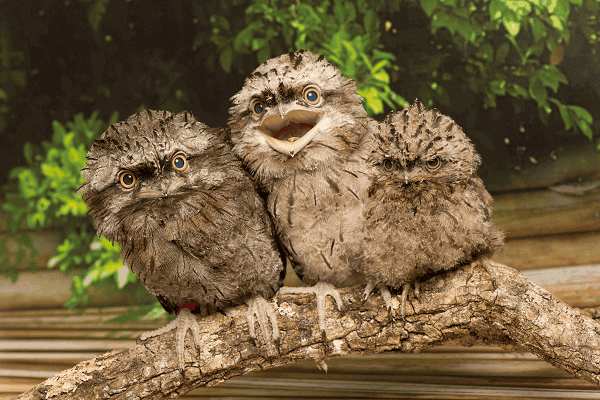What Do Potoo Birds Eat? Potoo birds are fascinating nocturnal creatures found in Central and South America. They belong to the Nyctibiidae family and are closely related to nightjars and frogmouths. Potoos are known for their unique appearance, large eyes, and cryptic plumage, which helps them blend seamlessly into their surroundings. While these birds are primarily known for their eerie calls and remarkable camouflage, their diet, and feeding habits are equally intriguing.
Diet of Potoo Birds
Potoo birds are insectivorous, meaning they primarily feed on insects. Their diet mainly consists of moths, beetles, grasshoppers, and other flying insects. Due to their nocturnal nature, potoos hunt exclusively during the nighttime hours. They are incredibly skilled at catching their prey in mid-air, thanks to their excellent aerial agility and large, open mouths.
Prey: Potoo Birds and their Captivating Prey

Potoo birds are masters of deception when it comes to hunting. They typically perch on branches or tree stumps, relying on their remarkable camouflage to stay hidden from predators and prey alike. From these vantage points, they silently wait for unsuspecting insects to fly within their reach. Once their prey is within striking distance, potoos launch themselves into the air and capture the insects with their wide mouths. Their large eyes aid in low-light hunting, making them even more proficient nocturnal predators.
Feeding Habits
The feeding habits of potoo birds are intriguing. As nocturnal hunters, they rely heavily on their excellent night vision to locate and catch their prey. Potoos have a very distinctive hunting style; they prefer to sit and wait for their food to come to them rather than actively chasing it. Their patient and stealthy approach helps ensure successful hunting without expending unnecessary energy.
Related: Cardinals Appear When Angels Are Near
Role in the Ecosystem
Potoo birds play a crucial role in the ecosystem by helping to control insect populations. As insectivores, they help regulate the numbers of various insect species, which can prevent outbreaks and maintain a balanced ecosystem. By feeding on flying insects, potoos contribute to the natural balance of their habitats.
Factors Affecting Potoo Bird’s Diet
Several factors influence the diet of potoo birds, including:
Habitat
Potoos are commonly found in tropical and subtropical regions of Central and South America. Their habitat preference greatly affects the availability of prey. They tend to inhabit lowland forests, river edges, and open woodlands, where they have better access to their preferred insect-rich hunting grounds.
Seasonal Variations
The availability of insects can vary with the seasons, which may affect the diet of potoo birds. During certain times of the year, certain insect species may become more abundant or scarce, leading potoos to adapt their feeding habits accordingly.
Availability and Competition
Competition with other nocturnal predators can also impact the diet of potoo birds. They may need to adjust their feeding patterns to avoid direct competition for prey with other night-active animals such as owls and nightjars.
Also Visit: Mythical Birds and Creatures: Legends of the Skies
Conservation Status of Potoo Birds
Potoo birds are generally considered to be of the least concern regarding their conservation status. However, specific species of potoos might face local threats due to habitat destruction, deforestation, and human disturbances. It is crucial to monitor their populations and habitats to ensure their long-term survival.
Threats to their Habitat and Population
Habitat loss is one of the most significant threats to potoo birds. Deforestation, logging, and land development reduce the availability of suitable habitats for these birds. Additionally, human activities can disturb nesting sites and disrupt their natural behaviors.
Conservation Efforts
Conservation efforts for potoo birds focus on preserving and restoring their habitats. This includes the establishment of protected areas and the promotion of sustainable forestry practices. Education and awareness programs also play a vital role in promoting coexistence between humans and these intriguing birds.
Future Prospects
The future of potoo birds depends on our commitment to conservation efforts and sustainable practices. By understanding their dietary needs and maintaining their habitats, we can ensure that these captivating nocturnal hunters continue to thrive in their natural environments.
Related Article: Cardinal Bird Facts: Fun Facts About Cardinal Birds!
Interesting Facts about Potoo Birds
- Potoo birds have a distinct vertical slit in the middle of their beaks, which likely helps protect their eyes from insects while catching prey.
- Their haunting calls, resembling a muffled, mournful human whistle, have earned them the nickname “Ghost Bird.”
- Potoos’ large eyes are fixed in their sockets, limiting their ability to move them, so they have to turn their entire head to change their field of vision.
FAQs About What Do Potoo Birds Eat:
Q: Are potoo birds entirely nocturnal? A: Yes, potoo birds are primarily active during the nighttime hours and are well-adapted to hunting in low-light conditions.
Q: Do potoo birds migrate? A: Some species of potoos are migratory, while others are sedentary and remain in their home range throughout the year.
Q: Are potoo birds related to owls? A: Despite their owl-like appearance, potoo birds are not closely related to owls. They belong to a different family (Nyctibiidae) within the order Caprimulgiformes.
Q: Can potoo birds turn their heads like owls? A: No, potoo birds cannot rotate their heads like owls. Their eyes are fixed in their sockets, which limits their head movement.
Q: Do potoos build nests? A: Potoos do not build traditional nests. Instead, they often lay their eggs directly on a tree branch or in a natural depression, relying on their cryptic plumage to provide camouflage for their eggs and chicks.
Final Thoughts:
In conclusion, What Do Potoo Birds Eat? Potoo birds are mysterious nocturnal hunters with a specialized diet that revolves around insects. Their role in controlling insect populations makes them essential players in their ecosystems. By understanding the factors affecting their diet and implementing conservation efforts, we can continue to admire and appreciate these captivating creatures for generations to come.
